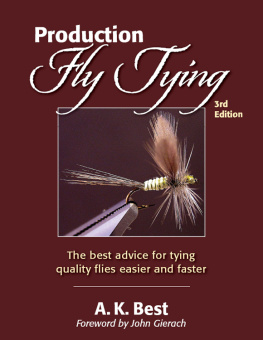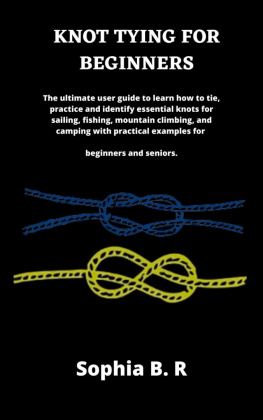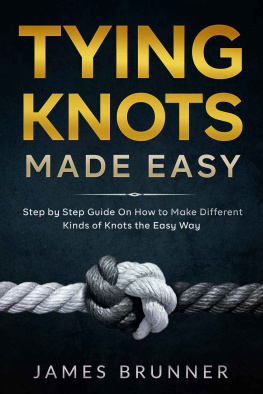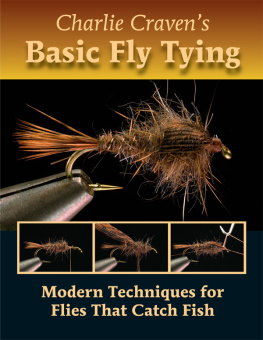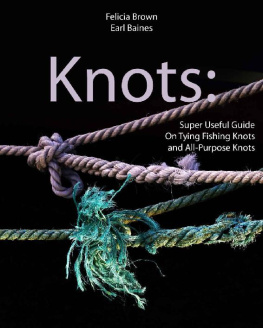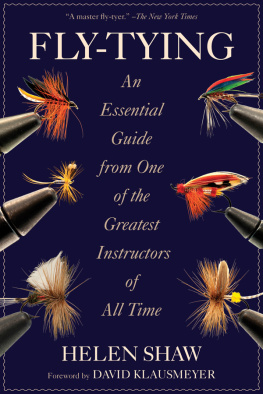A. K. Best - Production Fly Tying
Here you can read online A. K. Best - Production Fly Tying full text of the book (entire story) in english for free. Download pdf and epub, get meaning, cover and reviews about this ebook. year: 2015, publisher: Stackpole Books, genre: Romance novel. Description of the work, (preface) as well as reviews are available. Best literature library LitArk.com created for fans of good reading and offers a wide selection of genres:
Romance novel
Science fiction
Adventure
Detective
Science
History
Home and family
Prose
Art
Politics
Computer
Non-fiction
Religion
Business
Children
Humor
Choose a favorite category and find really read worthwhile books. Enjoy immersion in the world of imagination, feel the emotions of the characters or learn something new for yourself, make an fascinating discovery.
- Book:Production Fly Tying
- Author:
- Publisher:Stackpole Books
- Genre:
- Year:2015
- Rating:3 / 5
- Favourites:Add to favourites
- Your mark:
- 60
- 1
- 2
- 3
- 4
- 5
Production Fly Tying: summary, description and annotation
We offer to read an annotation, description, summary or preface (depends on what the author of the book "Production Fly Tying" wrote himself). If you haven't found the necessary information about the book — write in the comments, we will try to find it.
Production Fly Tying — read online for free the complete book (whole text) full work
Below is the text of the book, divided by pages. System saving the place of the last page read, allows you to conveniently read the book "Production Fly Tying" online for free, without having to search again every time where you left off. Put a bookmark, and you can go to the page where you finished reading at any time.
Font size:
Interval:
Bookmark:


Copyright 2015 by A. K. Best
Published by
STACKPOLE BOOKS
5067 Ritter Road
Mechanicsburg, PA 17055
www.stackpolebooks.com
All rights reserved, including the right to reproduce this book or portions thereof in any form or by any means, electronic or mechanical, including photocopying, recording, or by any information storage and retrieval system, without permission in writing from the publisher. All inquiries should be addressed to Stackpole Books, 5067 Ritter Road, Mechanicsburg, Pennsylvania 17055.
Printed in the United States of America
10 9 8 7 6 5 4 3 2 1
Third edition
Cover design by Wendy Reynolds
Cover image by the author
Photos by the author except where noted
Library of Congress Cataloging-in-Publication Data
Best, A. K., 1933
Production fly tying / A.K. Best. Third edition.
pages cm
Includes index.
ISBN 978-0-8117-1481-5
eISBN 978-0-8117-6191-8
1. Fly tying. I. Title.
SH451.B46 2015
688.7'9124dc23
2014042372
I dedicated the first edition of this book to my father. The second edition was respectfully dedicated to my grandchildren, and this third edition is dedicated to all the fly tiers who have so loyally used both earlier editions.
FOREWORD
B efore A. K. Best published the first edition of Production Fly Tying in 1989, tying books dealt with individual fly patterns from start to finish, as if each were entirely unique, so that the more patterns a book contained, the more cumbersome and repetitive it was. But at the same time, the tying instructions were often sketchy. Unless you were already an experienced fly tierin which case you probably didnt need the book in the first placesomething like, Step 1: Tie in tail left too many questions unanswered. How do I select the material? How much should I use? How do I measure the length? How do I align the tips? How do I keep the thread tension from rolling it around the hook shank? How do I get it cocked at the right angle? Where do I trim the butts? Hell, you could write a whole essay on how to tie in tails.
Which is what A. K. did. Tails, ribbing, bodies, wings, hackle: each with its own chapter covering selection and preparation of materials, plus detailed tying instructions for all the common types and styles, including any number of fine points you hadnt thought of, but that made a real difference when you tried them.
I dont know if this was the first book ever to treat tying procedures individually (its hard to imagine that in the 500-plus-year history of the sport no one had thought of it before), but it was the first one tiers of my generation had seen, and it changed everything. Now, instead of pawing through stacks of fly-tying books, video tapes, and old magazines looking for the tying directions for a specific pattern, you could simply glance at a fly, look up the individual steps in A. K.s book, and not only tie the thing, but tie it well. And instead of being cumbersome and repetitive, the book was brief and concise, covering the procedures for thousands of fly patterns in a scant 176 pages.
Oddly enough, A. K. didnt mention the books organization in his original introduction, and I only briefly alluded to it in my foreword. Like some other great ideas, it was so obvious that once you saw it, you hardly even blinked. And anyway, A. K. was more interested in explaining how to make fly tying go more quickly and seamlessly using the many tricks hed learned as a professional tier. At the time he was at the height of his career, turning out as many as 3,000 dozen flies a year, and it was amazing to watch him work. Flawlessly uniform flieseach one exactly like the lastcame out of the vise at the rate of one every couple of minutes, but he never seemed to hurry. What he did do was size, pair, and otherwise prepare and lay out his materials beforehand and then tie at a steady, sustainable pace without hesitation, fumbling, or wasted motion.
That kind of skill comes from nothing but years of experience, and you cant learn it by blindly following directions. But what you can learn from this book are the kind of details you should be paying attention to and the sorts of questions you should be asking yourself when you sit down to tie any pattern. Like, for instance, Do I really need seven wraps of thread here, or can I get away with two without hurting the flys durability? The answer is probably yes as long as youre working right up to the breaking point of the thread. Heres where experience comes in. The way you learn the breaking point of thread is to break it repeatedly, but pretty soon youll develop a sixth sense for when to ease off. (Tip: modern tying thread is stronger than most of us think.) Its worth doing because eliminating unnecessary wraps in half a dozen places on a fly while using thread torque as a tool will make the tying go faster, make your flies trimmer and less bulky, and also make them more durable so theyll last through more fish.
The cumulative effect of all the ideas, notions, and hints in this book is that theyll allow you to tie better, more substantial, more uniform flies and tie them more efficiently, which is what we all want when we sit down at the vise. As A. K. points out, anyone who ties more than one fly of a single pattern is a production tier, even if hes not trying to pay the mortgage with the proceeds.
Like all the best practitioners, A. K. is as much a student as he is a teacher. He was largely self-taught in the beginning at a time when instruction wasnt as easy to come by as it is now, which accounts for some of his unique approaches to tying procedures and fly design as well as his tendency to customize tools or make his own using things like clothespins and tongue depressors. But at the same time hes inquisitive as hell and the first one to accept good new ideas from other tiers and fishermen. He also has a critical eye and isnt shy about calling out dumb ideas, which, if taken in the right spirit, can be really instructive. This is, after all, a guy who has weathered countless fads and fashions in fly tying and who has managed to separate a handful of wheat from a whole lot of chaff.
But the way A. K. ties flies isnt just a random set of idiosyncrasies. This is all stuff thats been proven to work by someone whos tied as many flies in a year as some of us will tie in a lifetime and whos presented them to the ruthless marketplace where if theyre not good, they wont sell. And I suspect he could fill a book three times this size with the things hes tried and rejected as too clumsy, too time-consuming, or just not worth the trouble.
Thats what makes this one of those rare books thats as useful to experienced tiers as it is to beginners. Novice tiers will get a big leg up and save themselves years of hair-pulling trial and error, while old handseven prosmay find themselves shaken out of decades-old habits into slightly quicker, slicker ways of doing things. I did.
Youll probably be tempted to use this book piecemeal, by looking up whatever operation is giving you fits and following the directions. That works (Ive used it that way myself), but I recommend that you actually read it cover to cover first. The chapter on wings, for instance, contains some useful thoughts about wings in general, not just the type youre tying at the moment. And the chapters on tools and materials arent just obligatory; there are some good ideas there, too, including the forehead-slapper that you should use a good lamp and a chair adjusted to the right height for your vise so you can tie for two hours straight and not end up with a headache and a sore back.
Next pageFont size:
Interval:
Bookmark:
Similar books «Production Fly Tying»
Look at similar books to Production Fly Tying. We have selected literature similar in name and meaning in the hope of providing readers with more options to find new, interesting, not yet read works.
Discussion, reviews of the book Production Fly Tying and just readers' own opinions. Leave your comments, write what you think about the work, its meaning or the main characters. Specify what exactly you liked and what you didn't like, and why you think so.

